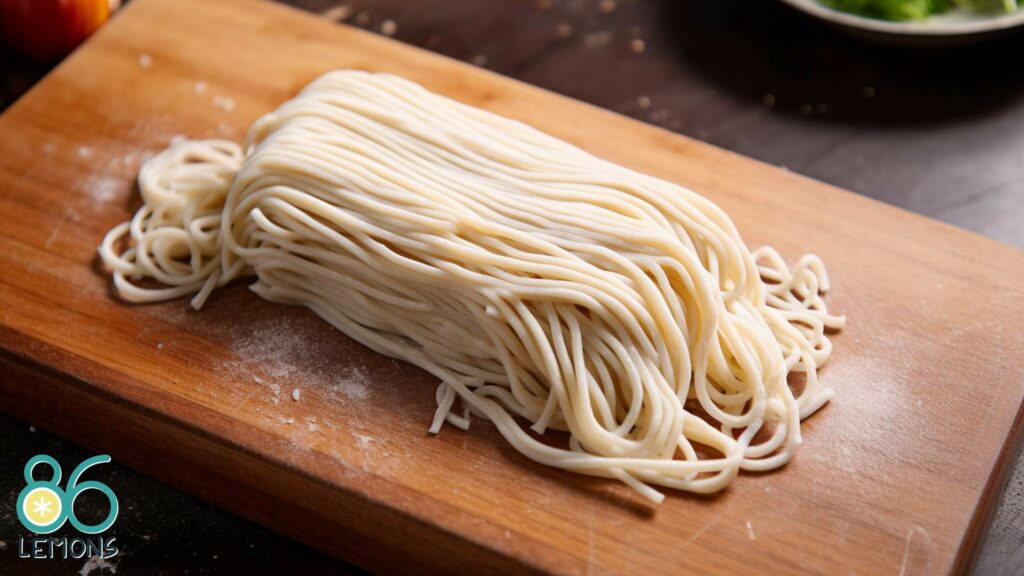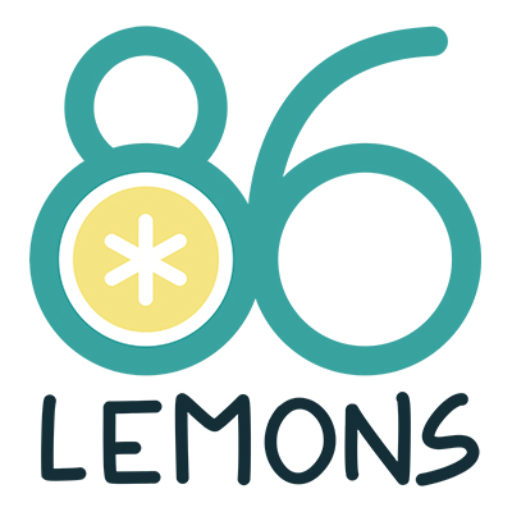As a devoted ramen enthusiast, I can’t resist exploring the wide variety of noodles available to create the perfect bowl of ramen. In this ever-growing world of delicious flavors and textures, knowing which type of noodles best suits your ramen cravings is essential.
From thin and chewy to thick and slurp-worthy, the right noodle choice can elevate your ramen experience to a new level. Learning the best types of noodles for ramen is necessary to this process.
To begin with, understanding the essentials of ramen helps us nail down the type of noodle that fits our preferences. There’s a whole world of ramen goodness waiting to be discovered, involving diverse types of noodles, flavor dynamics, and delectable toppings.
Whether you’re a fan of traditional Japanese-style ramen or experimenting with your homemade versions, finding the best noodles is an exciting adventure we all can embark on. Ready up your favorite easy vegan cookbooks as we dive into the world of ramen!
Key Takeaways
- Mastering the art of ramen starts with understanding its essentials and diverse noodle types.
- Experimenting with flavor dynamics and toppings can elevate your ramen experience.
- Embrace the adventure of discovering and crafting the perfect ramen noodles at home.
The Essentials of Ramen

Ramen is one of my all-time favorite dishes of Japanese cuisine! It consists of an amazing combination of flavorful broth and perfectly cooked noodles that will transport you to the streets of Japan. In this section, we will dive into the essentials of ramen, covering broth varieties and the characteristics of noodles.
Understanding Broth Varieties
When it comes to ramen, the magic is in the broth. You will find different types of broths used in various regions of Japan. Here are the four key types:
- Shio: Shio ramen uses a salt-based broth. It results in a lighter, clear soup. Sapporo, a city in Japan, is particularly known for its delicious shio ramen.
- Shoyu: Shoyu ramen is served in a broth with soy sauce. Shoyu ramen is the most common type of ramen in Japan.
- Miso: Miso ramen uses broth seasoned with miso paste (fermented soybean). This results in a thicker, richer miso soup with a deeper flavor.
Each of these broths also pairs nicely with certain noodle characteristics!
Analyzing Noodle Characteristics
The noodles in ramen are just as important as the broth, and understanding their characteristics can elevate your ramen experience. Here are some of the crucial factors when choosing the perfect ramen noodles:
- Texture: Authentic ramen noodles have a distinct texture and slight chewiness. This can be achieved using alkaline water (kansui) in the noodles.
- Thickness: Noodles can vary in thickness, from thin and straight to thick and wavy, depending on the wheat or buckwheat flour used and the water-to-flour ratio. Thicker noodles work well with rich broths, while thinner noodles pair nicely with lighter broths like shio.
- Flour Type: Wheat ramen noodles are made from wheat flour, which can lend a different flavor and texture compared to buckwheat flour.
- Fresh vs. Instant: Fresh ramen noodles will offer a better taste and texture compared to instant noodles, but instant ramen still has its place for a quick and easy meal.
So next time you’re in the mood for some delicious ramen, keep these essentials in mind! The right combination of broth and noodles can truly make a world of difference in your ramen experience. Happy slurping!
Diverse Types of Ramen Noodles
I love ramen, and I know there are many diverse types of noodles to enjoy with this wonderful dish. In this section, I’ll cover some of the best ramen noodles, including wheat-based options and alternate choices for those with dietary restrictions or preferences.
Wheat-Based Options
When it comes to authentic ramen, wheat-based noodles are generally the most popular. They’re made using wheat flour, which provides a satisfying texture and pairs perfectly with the rich flavors of ramen broth. Various forms of wheat-based noodles allow ramen lovers to enjoy a range of thicknesses and textures.
- Thin and straight noodles are ideal for lighter broths, such as shio and shoyu ramen. They cook quickly and absorb flavors well, producing a harmonious blend of tastes in every bite.
- Thick and wavy noodles: Perfect for heavier, creamier broths like miso ramen, these noodles have a more substantial presence in the bowl. Their wavy shape lets them capture more broth, ensuring a flavorful experience with each slurp.
- Udon noodles: Although not a traditional choice for ramen, udon noodles can be an interesting alternative. These thick noodles are made from wheat flour and have a slightly chewier texture that many love.
Alternate Choices
For those with gluten allergies, dietary preferences, or simply looking to branch out, there are plenty of other noodle options out there:
- Soba noodles: Made from wheat and buckwheat flour, soba noodles have a nutty flavor and a somewhat firmer texture than traditional ramen noodles. It is often used for its interesting flavor, such as in this vegan noodle bowl.
- Buckwheat noodles: These are made solely from buckwheat flour, making them a gluten-free option packed with nutrients. They have a unique, earthy flavor that can complement a variety of ramen broths.
- Instant noodles: While not as authentic as fresh ramen noodles, instant noodles are a popular choice for those looking for a quick and easy way to satisfy their ramen cravings. They’re usually thin and wavy, making them ideal for absorbing broth.
- Vegan noodles: Finally, for those following a vegan diet, there are noodles made without any animal products, ensuring a delicious and cruelty-free ramen experience.
A world of diverse ramen noodles is out there, just waiting to be explored. Whatever your preferences or dietary needs, a noodle type is undoubtedly perfect. So go ahead and dive into that delicious bowl of ramen, and enjoy your slurp-worthy adventure!
Ramen Flavor Dynamics

As a ramen lover, I’ve always been fascinated by the different flavor dynamics and how they can significantly impact the overall taste of ramen. In this section, we’ll explore the incorporation of seasonings and spices and how regional tastes influence ramen flavors.
Incorporating Seasonings and Spices
Regarding ramen, umami is the key to a rich and satisfying broth. Some common seasonings contributing to the umami experience include soy sauce (shoyu), miso, and salt (shio).
- Shoyu Ramen: Shoyu, or soy sauce, adds a distinct salty-sweet flavor to the broth. It creates a perfect harmony between the noodles and the soup, making it a delicious choice for ramen enthusiasts.
- Miso Ramen: Miso, a fermented soybean paste, is often used for its rich, savory taste. Its unique flavor depth elevates the ramen experience and keeps you craving more.
- Shio Ramen: Shio, or salt, creates a light and clean taste that balances the overall dish. It is a delicate choice for those who prefer a more subtle flavor profile.
Of course, spiciness is an essential aspect of many ramen dishes. Spicy and heat elements can be incorporated into the broth in seasonings like chili oil, chili flakes, or spicy ingredients.
Top Picks for Ramen Toppings
I love a steaming bowl of ramen, and the toppings make it even more exciting! There are so many different options that it can be a bit overwhelming.
Vegetables and Condiments
Now, let’s talk about vegetables and condiments! To start, nori, or dried seaweed, brings a unique, seafood-y taste that can amp up your bowl of ramen. For a little crunch, bean sprouts or menma (fermented bamboo shoots) are perfect additions.
Green onions add a delightful bite and a pop of color, while shiitake mushrooms bring an earthy, umami flavor that perfectly complements the rich broth. Finally, don’t forget to sprinkle some toasted sesame seeds, which pair wonderfully with almost any ramen style, adding an extra layer of flavor and texture to your bowl.
- Nori (seaweed)
- Bean sprouts
- Menma (fermented bamboo shoots)
- Green onions
- Shiitake mushrooms
- Sesame seeds
The beauty of ramen lies in its versatility and customization to fit your taste preferences. Don’t be afraid to mix and match these amazing toppings to create your ultimate ramen experience!
Ramen Noodles Beyond Japan
Global Interpretations
While discovering the ramen world, I came across some unique global interpretations. Ramen might have originated in Japan, but its popularity is now far-reaching! You could argue that instant ramen, an international phenomenon after World War II, greatly spread the love for this flavorful noodle soup.
Take pho, for instance. It’s the Vietnamese version of wheat noodles in a savory broth. Although not a ramen variation, the soup’s sumptuous taste, rich in umami, reminds me of my ramen cravings!
There’s the tsuke-men—a close cousin of ramen with Japanese influences. It’s a dish where noodles are served separately from the broth. You dip the noodles into the broth as you eat, making every bite a little adventure!
Innovations and Fusion
The fascinating world of ramen innovation keeps me hooked! There are numerous instances where chefs and creative home cooks have put their spin on this delicious Japanese cuisine.
One fusion dish I came across was abura soba. Originally from Fukuoka, this fresh approach to ramen uses an oil-based sauce instead of traditional broth, elevating the flavors of the wheat noodles.
Another interesting twist on the Japanese classic is hiyashi chuka. This cold ramen dish serves noodles with an assortment of toppings, making it perfect for warm weather. Summertime never tasted so good!
Speaking of brand innovations, let’s not forget Sapporo Ichiban. This popular instant ramen noodle brand offers flavors like miso and tonkotsu, which bring the taste of Hakata ramen straight to your home.
In conclusion, there’s no limit to ramen noodles’ potential variations and reinterpretations. I’m always excited to try new and creative versions of this classic Japanese soup and discover new ways to satisfy my ramen cravings!
Crafting Ramen at Home
Cooking Techniques and Tips
First up, let’s tackle cooking techniques. To create authentic ramen, it’s essential to focus on the noodles. The best noodles for ramen are wheat-based and alkaline.
When cooking these noodles, play around with the thickness and the cooking method. Some chefs recommend boiling them in water with added butter, enhancing their flavor.
Another essential element is the seasoning. Ramen dishes are all about showcasing bold and rich flavors! Use high-quality herbs, like miso or soy sauce, to get that authentic ramen taste.
Selecting the Right Package
Now that we’ve covered cooking techniques let’s discuss selecting the right package. With all the instant noodles and ramen noodles brands available, it can be confusing to choose the best one.
My advice? Skip the high-calorie, convenience-driven options and go for a more authentic product. Finding that perfect ramen noodle brand for your home-cooked dishes is worth the extra effort.
Here are a few things to consider when selecting the right package:
- Flour: Ramen noodles are typically made from wheat flour. Look for quality brands that use high-grade wheat flour for a better taste and texture. You can also go for vegan flour alternatives.
- Thickness: Remember, the thickness of the noodle can significantly impact the type of dish you’re making. Experiment with different thicknesses to find your favorite.
- Instant vs. Fresh: While instant noodles may be more convenient, fresh noodles can provide a truly authentic ramen experience. Look for fresh noodles in Asian grocery stores, or make your own using a step-by-step guide!
- Dietary Preferences: Nowadays, there are many options for different dietary preferences. Keep an eye out for gluten-free or low-carb choices if needed.
Combining these delicious noodles with the perfect seasoning and cooking technique will help you create amazing ramen dishes at home. Happy cooking!
Final Thoughts

I can’t help but get excited about finding the perfect noodles for ramen! After researching and trying various noodles, it’s clear that the best ramen noodles combine flavor, texture, and cooking methods to elevate your ramen experience.
When choosing the right noodles, we must consider the type of flour used, shape, thickness, and cooking method. Authentic ramen noodles should have a distinct texture and slight chewiness, which allows them to absorb the flavors of the broth.
Pairing the noodles with the right kind of ramen broth is crucial. For instance, miso ramen has a miso-based broth and works well with thicker, chewier noodles.
Experimenting with different ramen noodle brands like Maruchan or trying various cooking methods can also enhance the flavor and texture of your dish. For instance, creamy ramen tastes amazing when you use well-cooked udon noodles.
Now that you have all this information, it’s time to get into the kitchen and prepare the ultimate ramen experience with the perfect noodles. Happy cooking!


